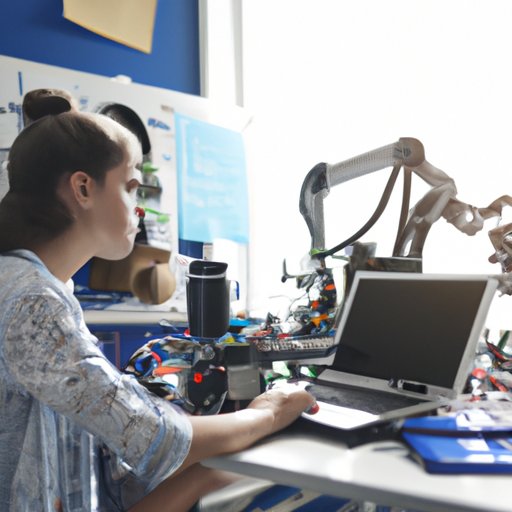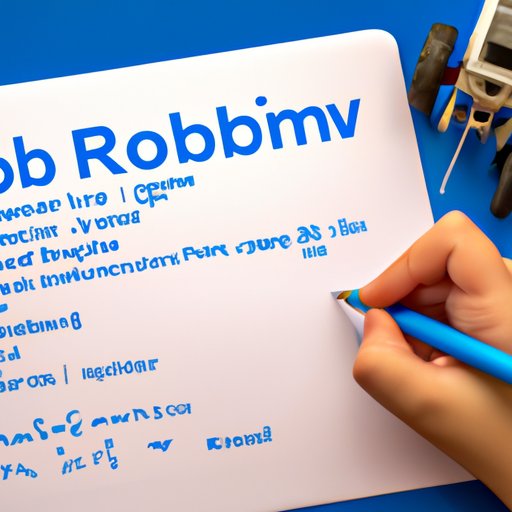Introduction
Coding for robotics is the process of writing computer programs that allow robots to interact with their environment. Robotics coding involves using programming languages to create algorithms that enable robots to take specific actions and respond to external stimuli. These algorithms can be used to control robotic movements, detect objects, process sensory data, and even make decisions.
Robotics coding requires a deep understanding of the underlying concepts of robotics and programming. It also requires knowledge of the various types of programming languages and platforms available for robotics coding. In this article, we will explore the basics of robotics coding and provide an overview of the common programming languages used for robotics.
Choosing the Right Programming Language for Robotics
When choosing a programming language for robotics coding, it is important to consider the type of robot being used and the desired outcome of the project. Some of the most popular robotics platforms include Arduino, Raspberry Pi, and LEGO Mindstorms. Each platform has its own programming language, so it is important to carefully evaluate the capabilities of each language before deciding which one to use.
It is also important to understand the different types of robot control systems. The two main types are open-loop and closed-loop. Open-loop control systems do not require feedback from the environment, while closed-loop control systems use feedback from the environment to adjust the robot’s behavior. Depending on the type of robot being used, one type of control system may be better suited than another.

Creating Programs for Robotics Projects
Once the right programming language and robot control system have been chosen, it is time to start writing the code for the robotics project. The best way to do this is to create a step-by-step guide that outlines the task at hand and the expected outcome. This should include a detailed description of the robot’s environment, the tasks the robot should be able to perform, and the desired behaviors.
Once the steps have been outlined, it is time to write the code. There are several tips and tricks that can help ensure a successful robotics project. First, it is important to break down complex tasks into smaller ones that can be solved individually. Additionally, it is important to test the code frequently to identify any potential issues before they become serious problems.
It can also be helpful to incorporate debugging techniques into the code. Debugging involves testing the code in small sections and looking for errors or bugs. This can help reduce the amount of time spent troubleshooting later on.
Conclusion
Robotics coding can be a challenging but rewarding endeavor. By understanding the basics of robotics coding, choosing the right programming language and robot control system, and creating programs for robotics projects, anyone can get started in robotics coding. With the right knowledge and resources, anyone can learn to create their own robotics projects.
In this article, we explored the basics of robotics coding, from selecting the right programming language to creating programs for robotics projects. We also discussed some tips and tricks for a successful robotics project. We hope this article provided a helpful overview of robotics coding and gave you the tools you need to get started.
(Note: Is this article not meeting your expectations? Do you have knowledge or insights to share? Unlock new opportunities and expand your reach by joining our authors team. Click Registration to join us and share your expertise with our readers.)
